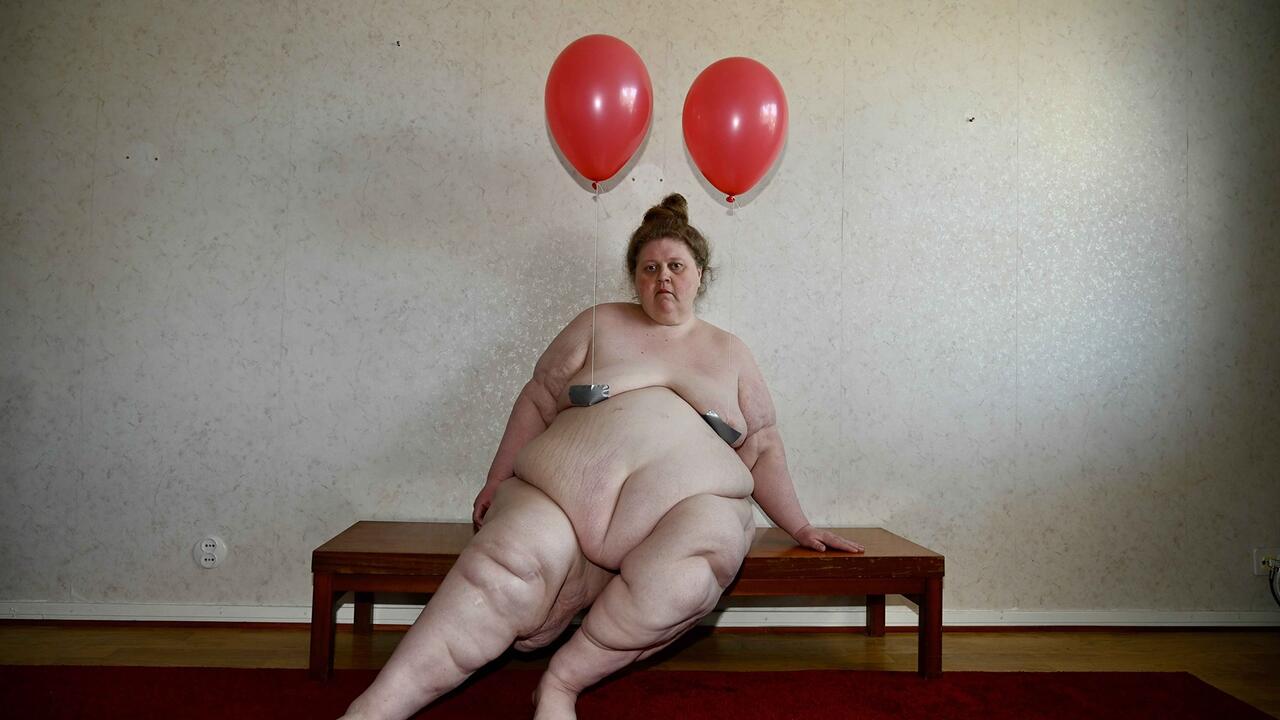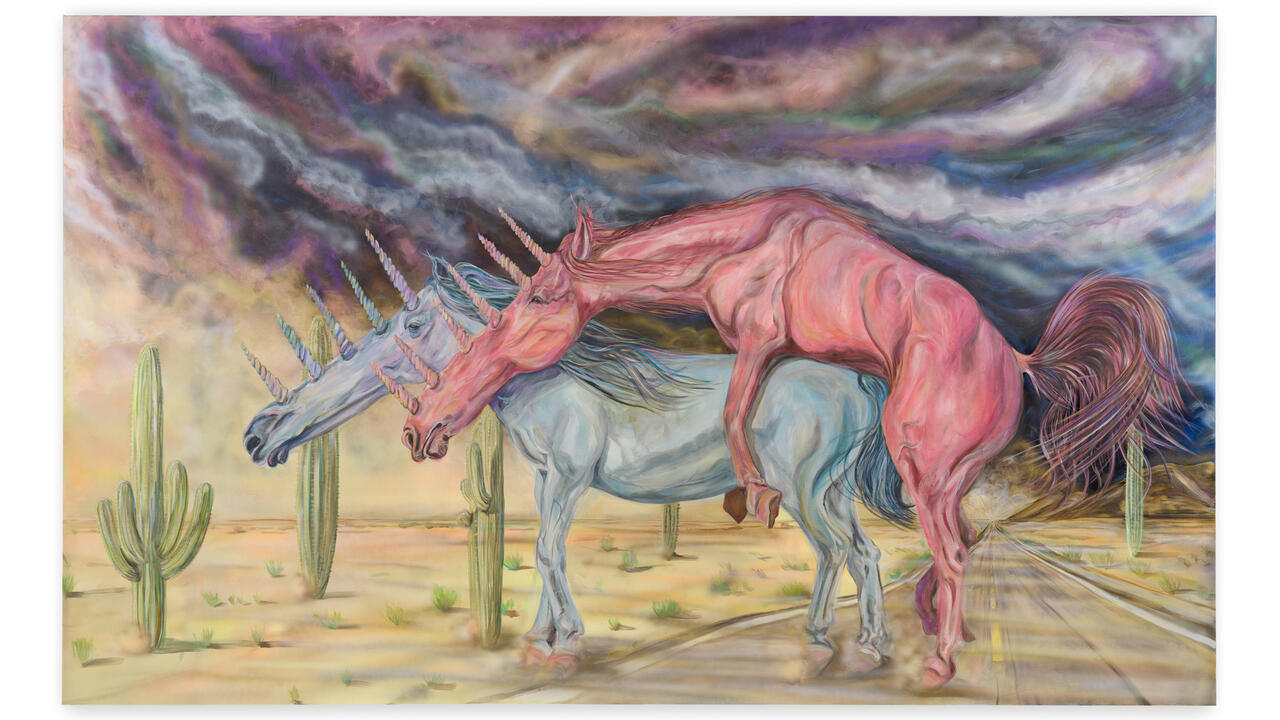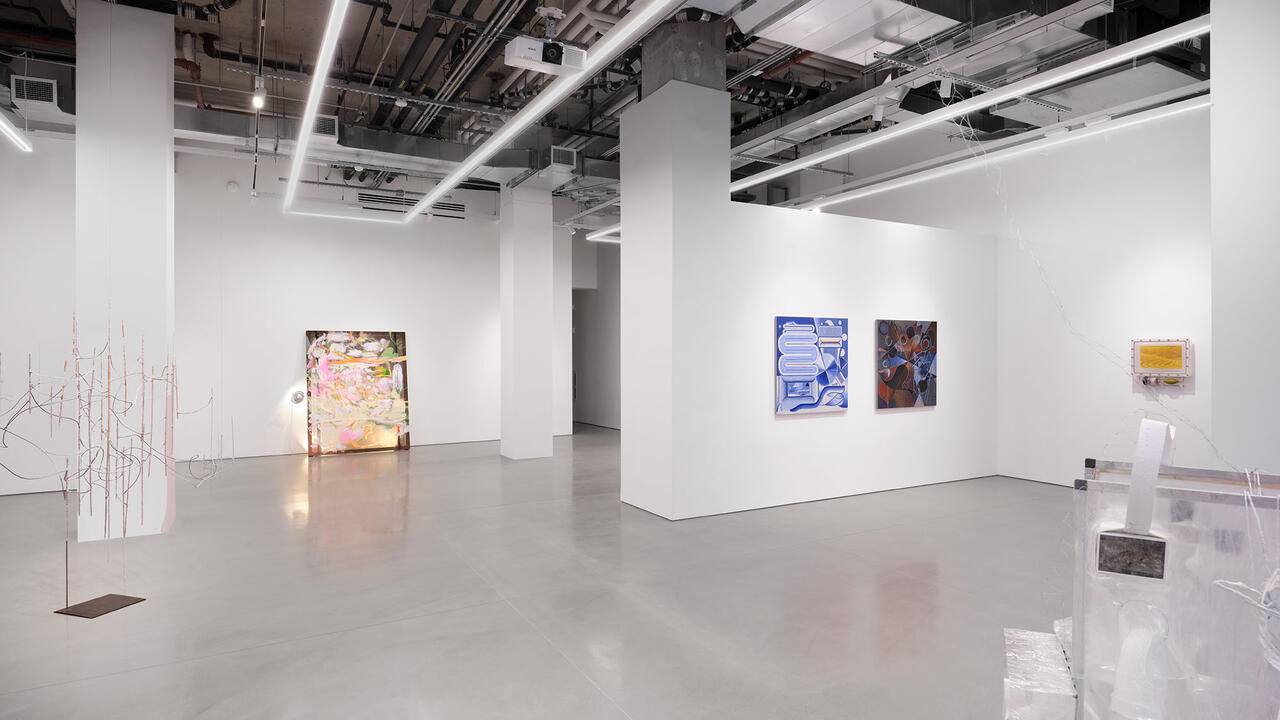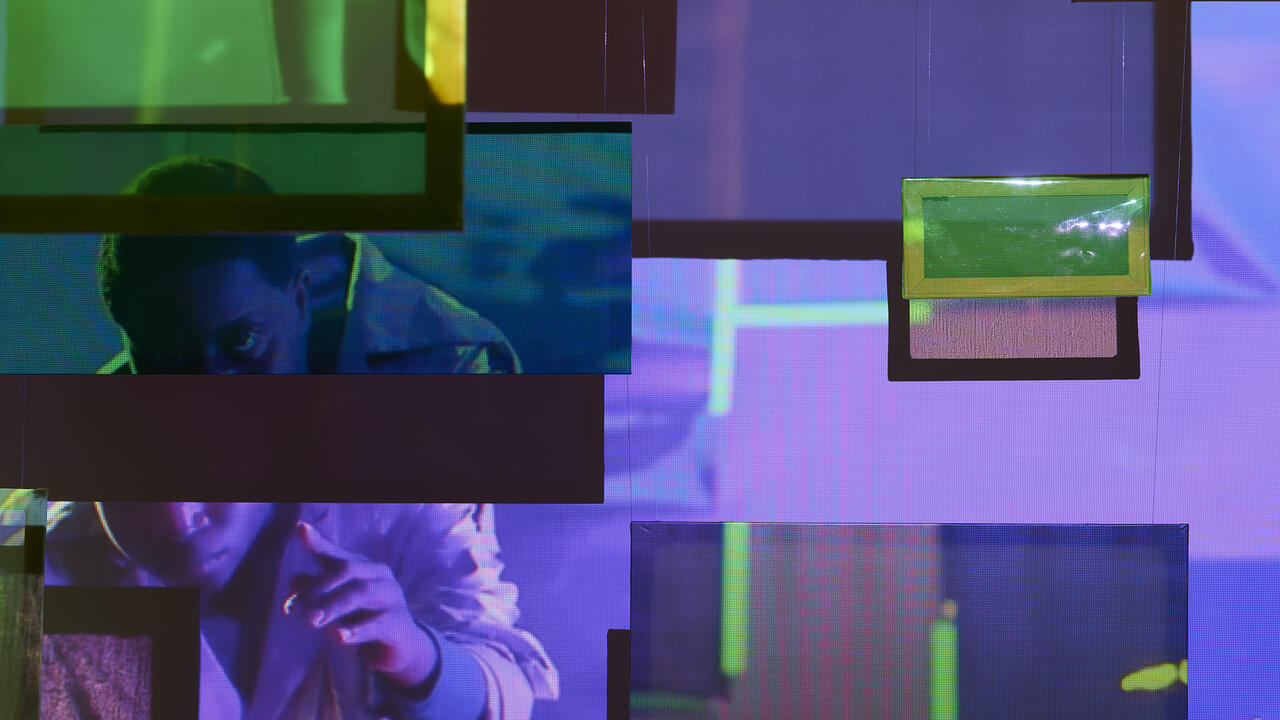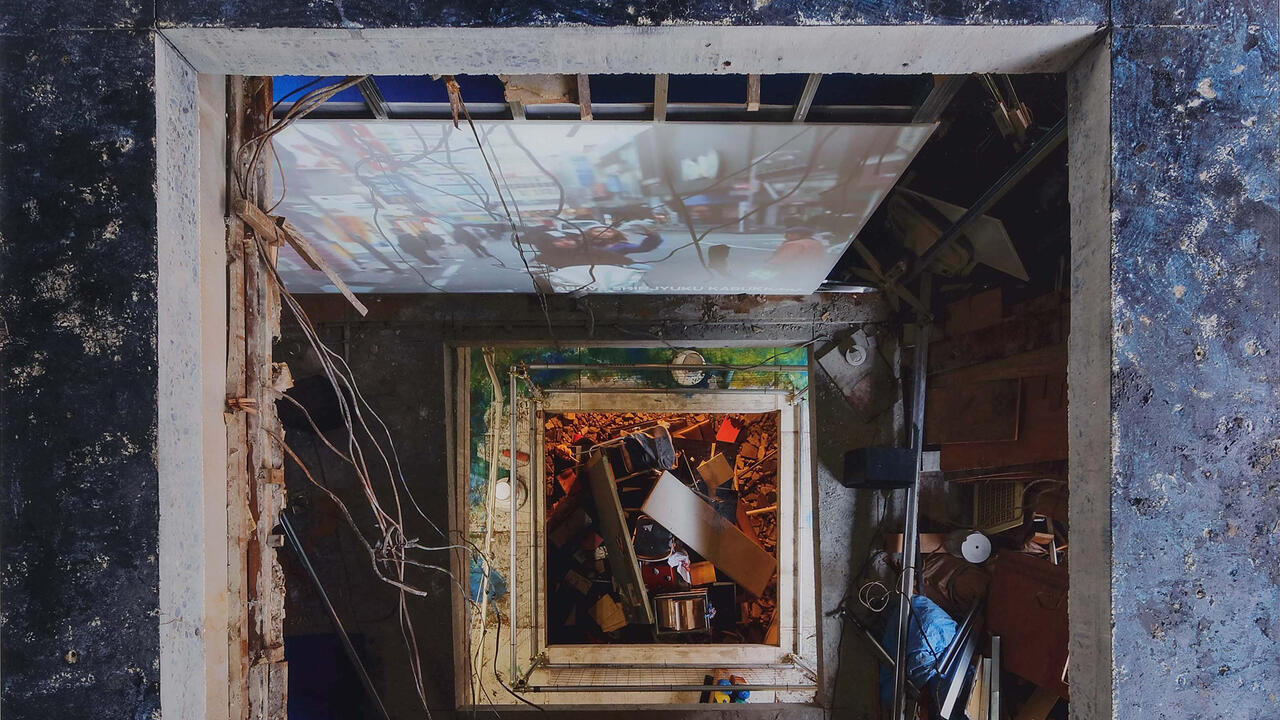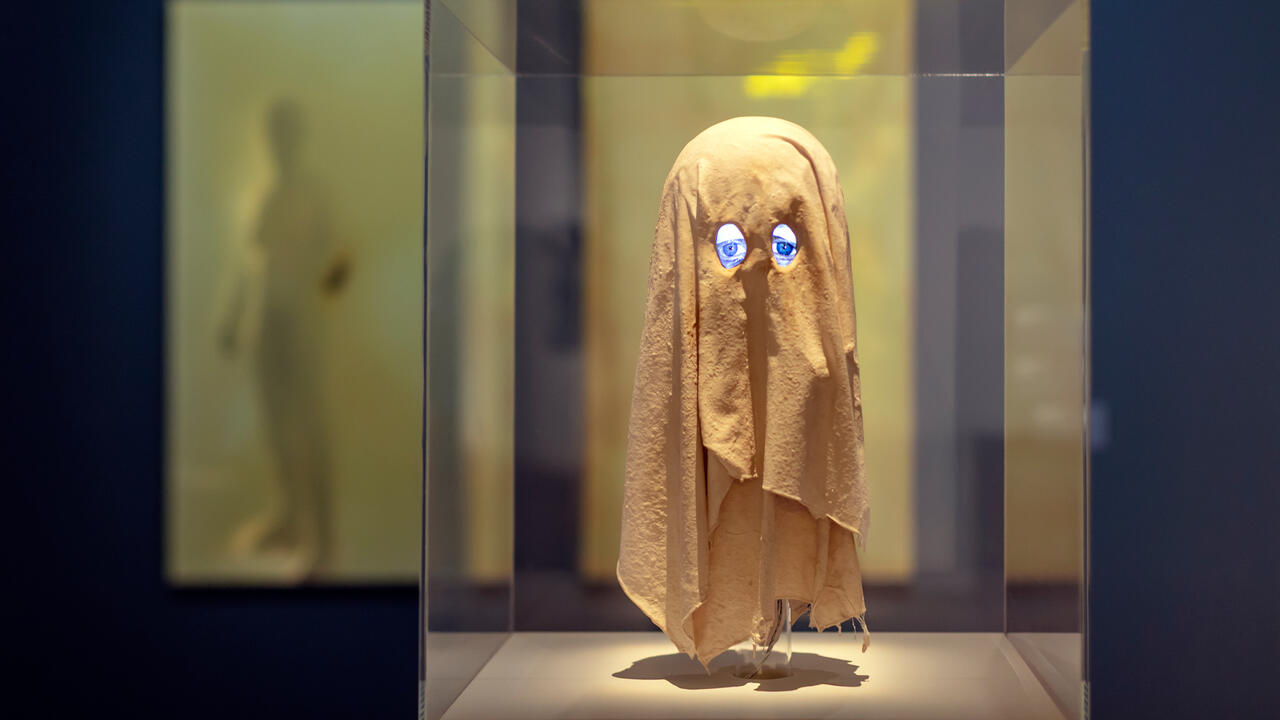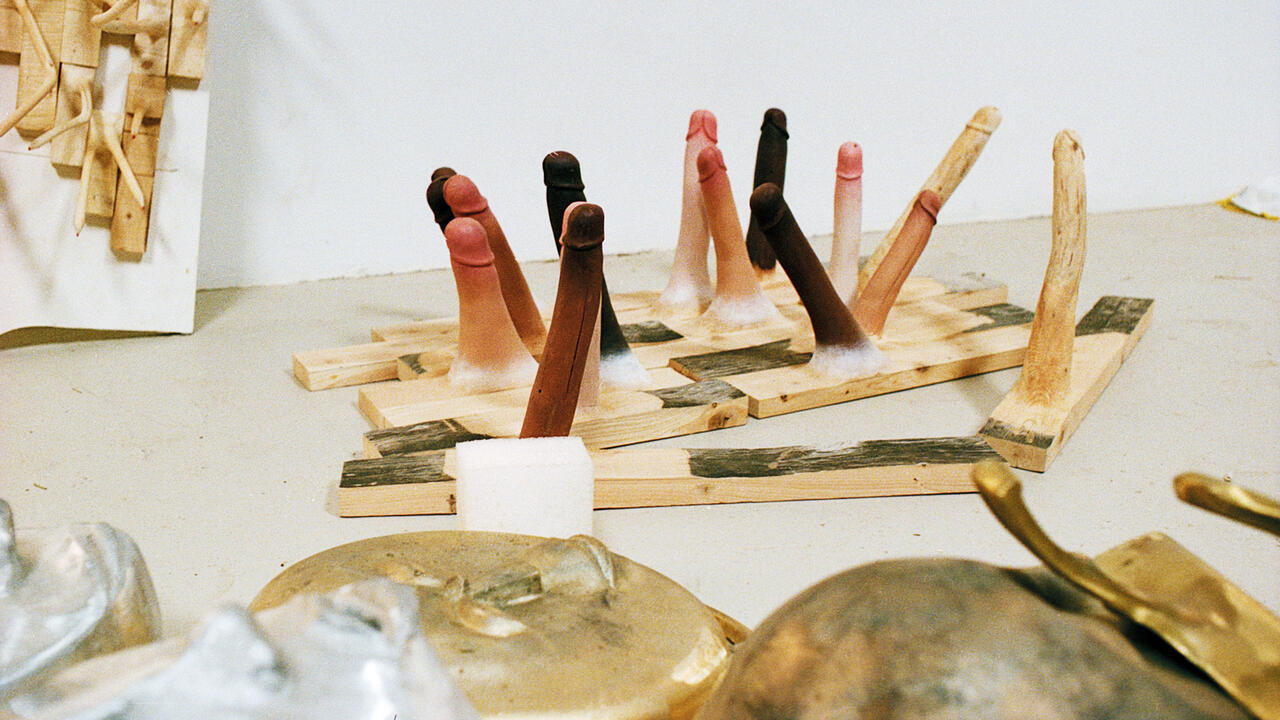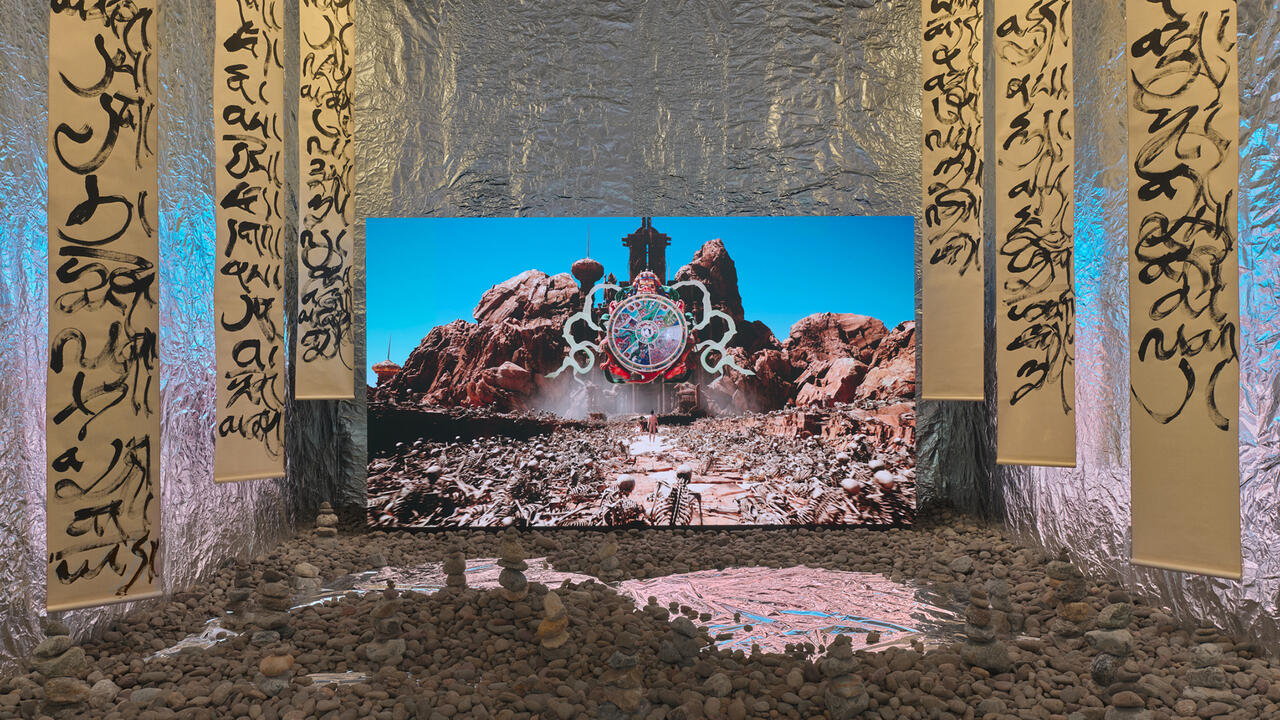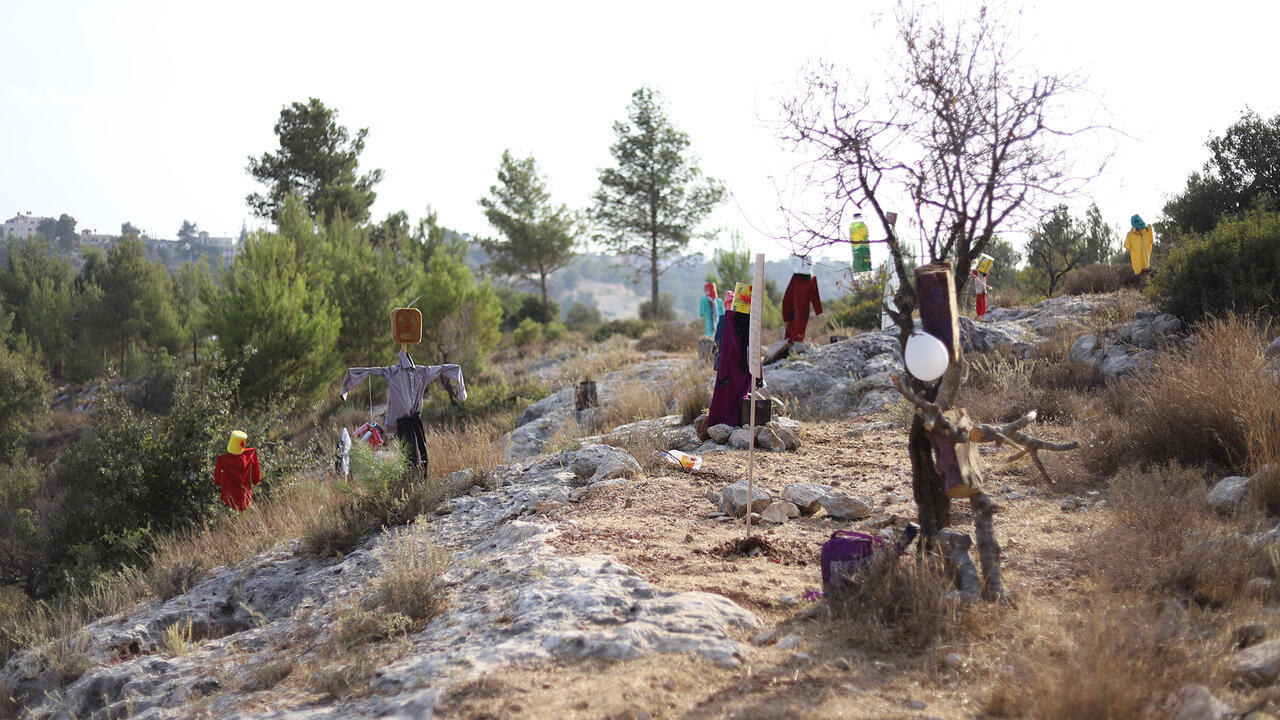Critic’s Guide: New York
From re-examined positions, to explorations of gender and energy: a roundup of the best shows across the city
From re-examined positions, to explorations of gender and energy: a roundup of the best shows across the city


Lewis Stein, ‘Works from 1968–1979’
ESSEX STREET
29 October – 22 December 2017
Having found success as a painter in the 1960s, New York-based artist Lewis Stein went on to reconsider the readymade by cooly transplanting overlooked urban objects – a street lamp, stanchions, a wooden billy club – into the gallery. This show gathers key works from 1968 to 1979 and makes a compelling argument for revisiting Stein’s oeuvre. Stein separates the readymade from its Duchampian irony, revealing instead how everyday objects can guide visibility and delimit movement in a subtle and concise form of policing. The exhibition’s force resides less in the objects themselves than in their effect on the body of the viewer that must negotiate them, for example skirting a barrier (Untitled, c.1972) or squinting against a blinding street light (Untitled, c.1979–80). There’s a productive relationship to younger artists on the gallery’s roster, too, such as Park McArthur and Cameron Rowland, each of whom mine histories of control held within the seemingly benign.

Barbara Hammer ‘Evidentiary Bodies’
Leslie-Lohman Museum of Gay and Lesbian Art
7 October 2017 – 28 January 2018
Barbara Hammer ‘Truant: Photographs, 1970-1979’
Company Gallery
22 October – 26 November 2017
Barbara Hammer is best known for the pioneering early films that she began making in the late 1960s, which defiantly picture queer and specifically lesbian desire. Several examples are included in ‘Barbara Hammer: Evidentiary Bodies’, curated by Staci Bu Shea and Carmel Curtis at the Leslie-Lohman Museum of Gay and Lesbian Art, but this survey show also gathers archival materials, works on paper, photographs and the artist’s recent projects addressing her own diagnosis with ovarian cancer. Blunt references to sickness (to play a duo of videos you must first locate lumps in prosthetic breasts) are paired with parodies of strength, as in prints from 1998 superimposing Hammer’s face on bodybuilding advertisements. The boundaries between pleasure and pain, wellness and illness are blurred, messing with the rubrics we use to measure such intimacies. Seeing the breadth of Hammer’s practice tempers the essentializing tendency potentially read into those seminal early films, where nature, womanhood, and pleasure are less critically coupled. A concurrent exhibition at Company Gallery presents black and white photographs taken by Hammer early in her career, between 1970 and 1979. Here, too, the personal and professional commingle. A 1979 image of Hammer in a lover’s embrace, for example, neighbours one of a production meeting for the film Sappho (1978) – a circle of stark naked bodies in serious planning mode.

‘Cosmic Communities: Coming Out Into Outer Space – Homofuturism, Applied Psychedelia & Magic Connectivity’
Galerie Buchholz
2 November, 2017 – 13 January, 2018
Mysticism and psychedelia typically connote a freewheeling disregard for rules and regulations. Curated by Diedrich Diederichsen and Christopher Müller, this show locates a counter-history whereby liberation (sexual, social, aesthetic) is sought in cosmic, mathematical, and musical orders. Musical scores are frequent elements and an apt mnemonic for the show’s premise, insofar as their rigorous structure often aspires to transcendence. The show jumps off from the mystical and specifically homosocial literary collectives that arose in Germany in the early 20th century around writers Stefan George and Hans Henny Jahnn. It finds throughlines between this earlier moment and the aspirational subcultures of the 1960s, but also the hangover of this utopian impulse in contemporary artistic production. Trans-historic echoes abound: a vitrine related to Jahnn, who found idealized numerical ratios in the organization of organs, sits next to a recent work by Lutz Bacher, itself composed of organ pipes. John McCracken’s ‘mandala’ drawings and Isa Genzken’s radios are highlights – as are works by Tony Conrad (one from 1995 is titled Slapping Pythagoras) that antagonize this faith in cosmic harmony. Dizzying and trippy in scope, the show resonates on many frequencies.

‘Trigger: Gender as a Tool and a Weapon’
The New Museum
27 September, 2017 – 21 January, 2018
The New Museum has a history of mounting exhibitions that grapple with sex and gender, for instance ‘Difference: On Representation and Sexuality’ (1984–85) and ‘Bad Girls’ (1994). ‘Trigger: Gender as a Tool and a Weapon’ follows in this vein, but abolishes the binary understandings of difference that undergirded those earlier shows. An embrace of gender fluidity and attention to intersectionality inform the works, but also the curatorial approach, which, expansive in scope and buoyantly installed, traces networks of identity and care rather than aesthetic affinity. That said, a visceral materiality pervades, and works by Diamond Stingily, Vaginal Davis, and Nayland Blake are standouts. ‘Trigger’ raises urgent questions around the criteria for inclusion that accompanies shows dealing with the politics of identity: need the work itself address the topic at hand, or is the artist’s self-identification of foremost importance? Can the two be separated? In a moment when the ingrained sexual violence and gender inequity of the art world (and the world at large) are being spotlit, the political stakes of this show are even more undeniably pressing.

Jean-Luc Moulène, ‘Hole, Bubble, Bump.’
Miguel Abreu Gallery
29 October – 22 December, 2017
Moulène is a mercurial artist, whose flitting between rigour and insouciance can both seduce and frustrate. His second show at Miguel Abreu Gallery similarly traffics in ambiguity, but there’s a material forthrightness to the assembled sculptures, each of which hews close to the body. Several are derived from 3D scans and picture the human form directly, while others – such as porcelain casts of tree trunks – trade in affinity. Still others seem more like tools of uncertain use, asking to be picked up and handled, and in so doing wink at a conversation between aesthetic and use value, a stale topic in most other hands. Throughout, a sense of lingering absence or pending eruption pervades, as suggested by the ‘holes, bubbles, and bumps’ of the show’s title. But there’s another action here, too, that of suturing: in one of the most poignant works, a plastic deck chair is sliced down the middle and its absent half cobbled back together in cardboard.

Nina Canell, Milford Graves, Benjamin Kunkel
The Artist’s Institute
19 September – 22 December 2017
A consideration of energy and its necessary correlate, entropy, grounds this season at the Artist’s Institute. Departing from the Institute’s typical sustained focus on one artist, curator Jenny Jaskey has grouped together sculptor Nina Canell, artist and musician Milford Graves, and writer Benjamin Kunkel. There’s an art historical legacy of forgoing bounded objects to instead harness fluctuations of energy; this show follows that inquiry as it moves across scales and disciplines to encompass systems biological, economic, and ecological. Among Canell’s works are sculptures made of mastic gum – a non-Newtonian fluid that looks solid but slowly puddles over time. Graves, a free jazz stalwart, is showing a sculpture based on the vibrations of the body alongside a ‘heartbeat’ concert, which takes place on 12 November, extending his interest in ‘biological music.’ On 8 November, Kunkel will speak on the appeal to continuous growth shared by both modern aesthetics and economics. In a moment obsessed with expansion and seamless connectivity, it seems relevant to consider the reality of atrophy, friction, and burn-out.

Marcia Marcus, ‘Role Play: 1958 – 1973’
Eric Firestone Gallery
12 October – 2 December 2017
Portraiture typically aspires to distill the inner ‘truth’ of its subjects. The 23 painted portraits on display in this overdue reappraisal of Marcia Marcus’ practice instead highlight the malleability of identity, anticipating the concerns of subsequent feminisms through traditional means. The works present a cast of characters costumed and staged against backdrops in which they appear to float, as if collaged in, though Marcus painted always from life. Her figures are often blocked out in flat swaths of neutral colour (more grayscale than flesh-toned) reminiscent of her contemporary Alex Katz but also, somehow, Édouard Manet. In contrast, the chosen trappings of identity are rendered with great precision: a shirt’s pattern, a shawl’s tassel, the tiling of a floor. These works are, in the end, intriguing historical documents, both in their subjects (among them critic Jill Johnston, artists Lucas Samaras and Bob Thompson) and their ability to show how a laden (and dated) medium such as painting might speak to contemporary concerns.
For more current shows to see in New York, visit On View.
Main image: Barbara Hammer, Sync Touch (detail),1981, 16mm film still. Courtesy: Leslie-Lohan Museum of Gay and Lesbian Art, New York © the artist








